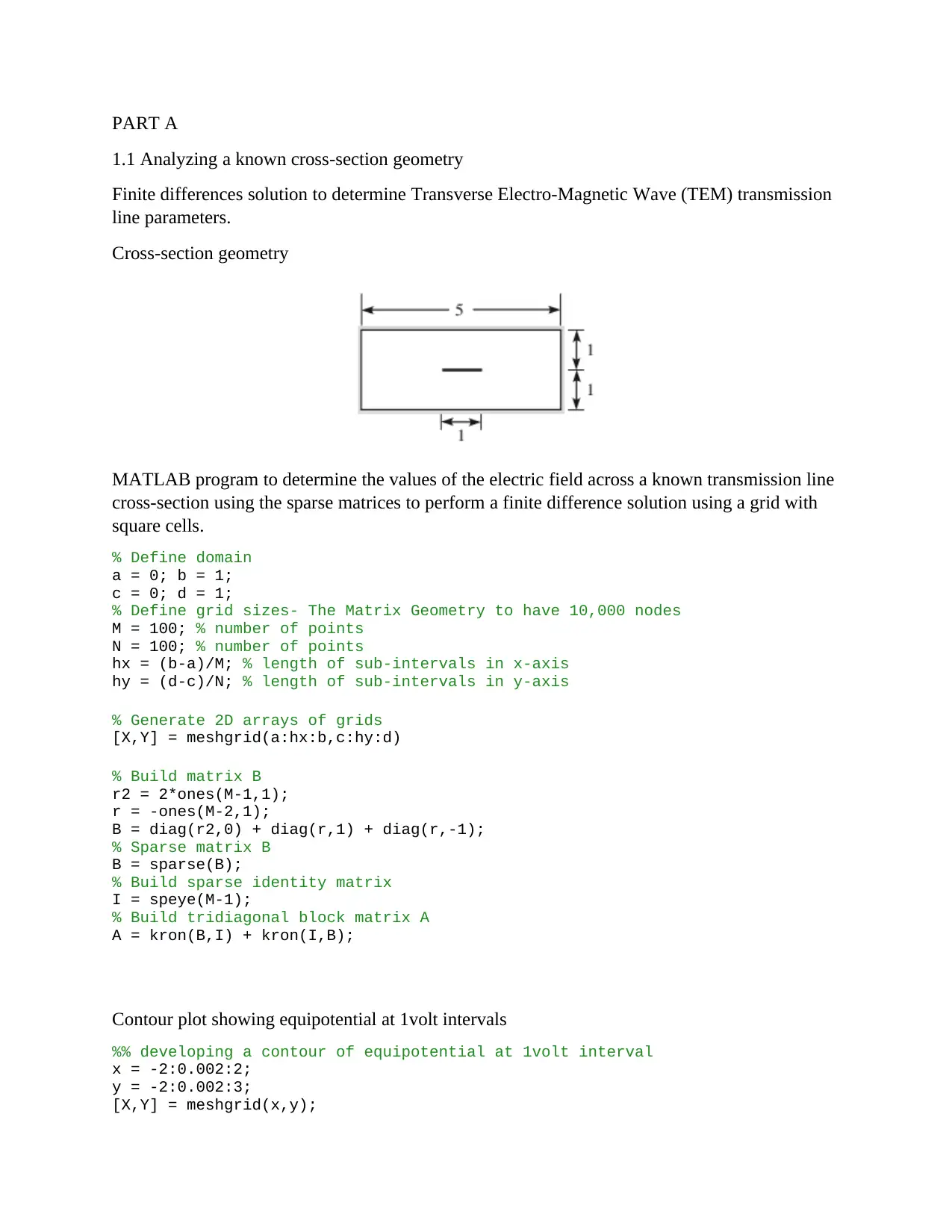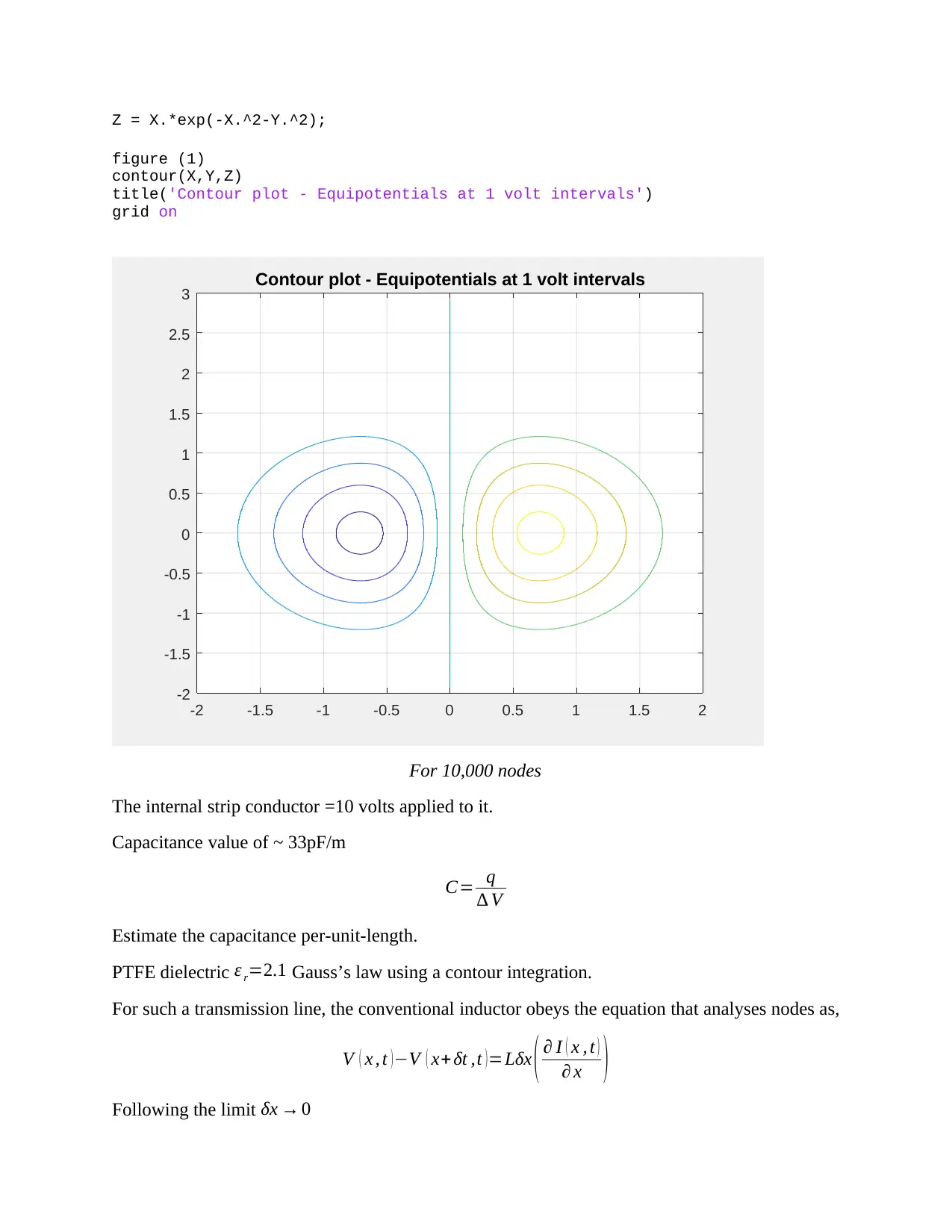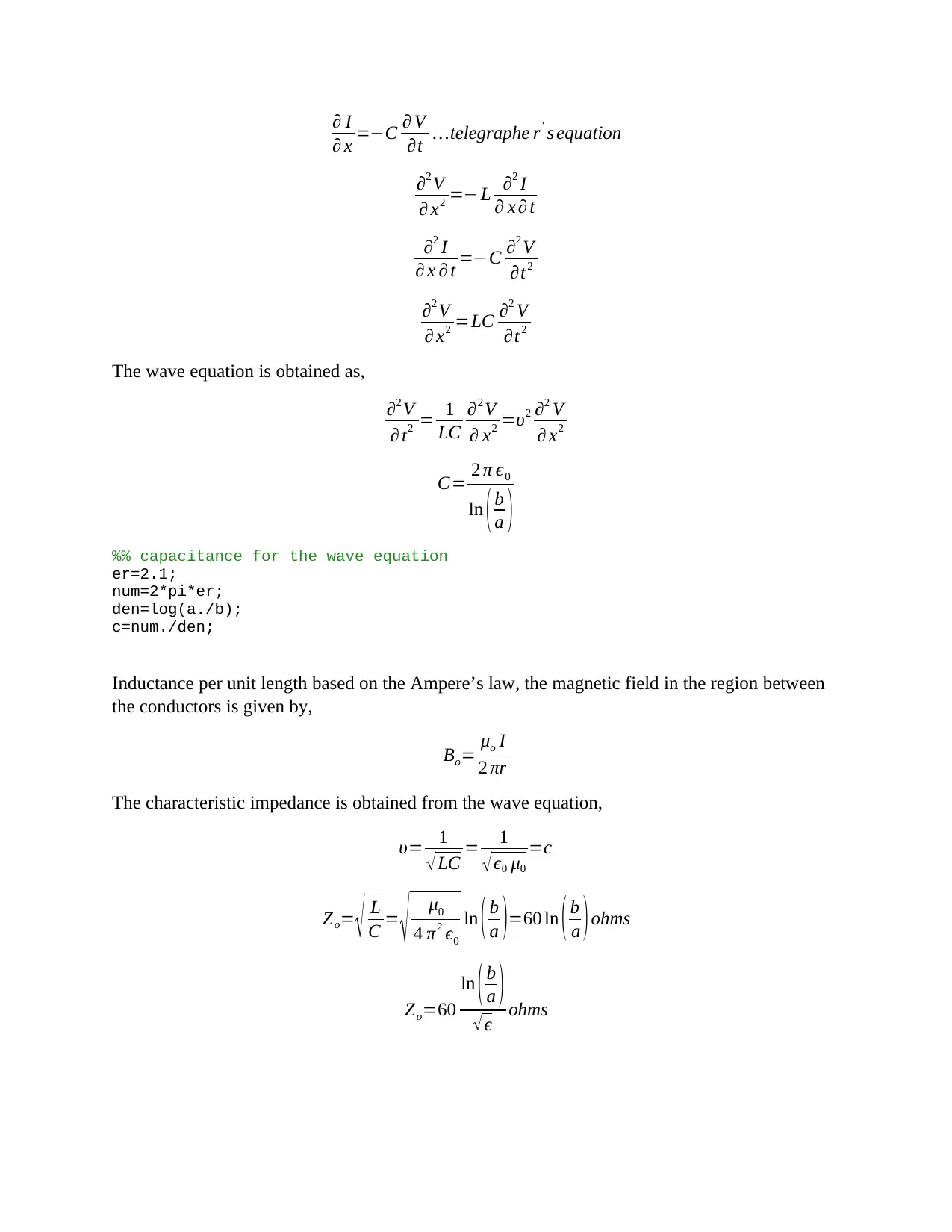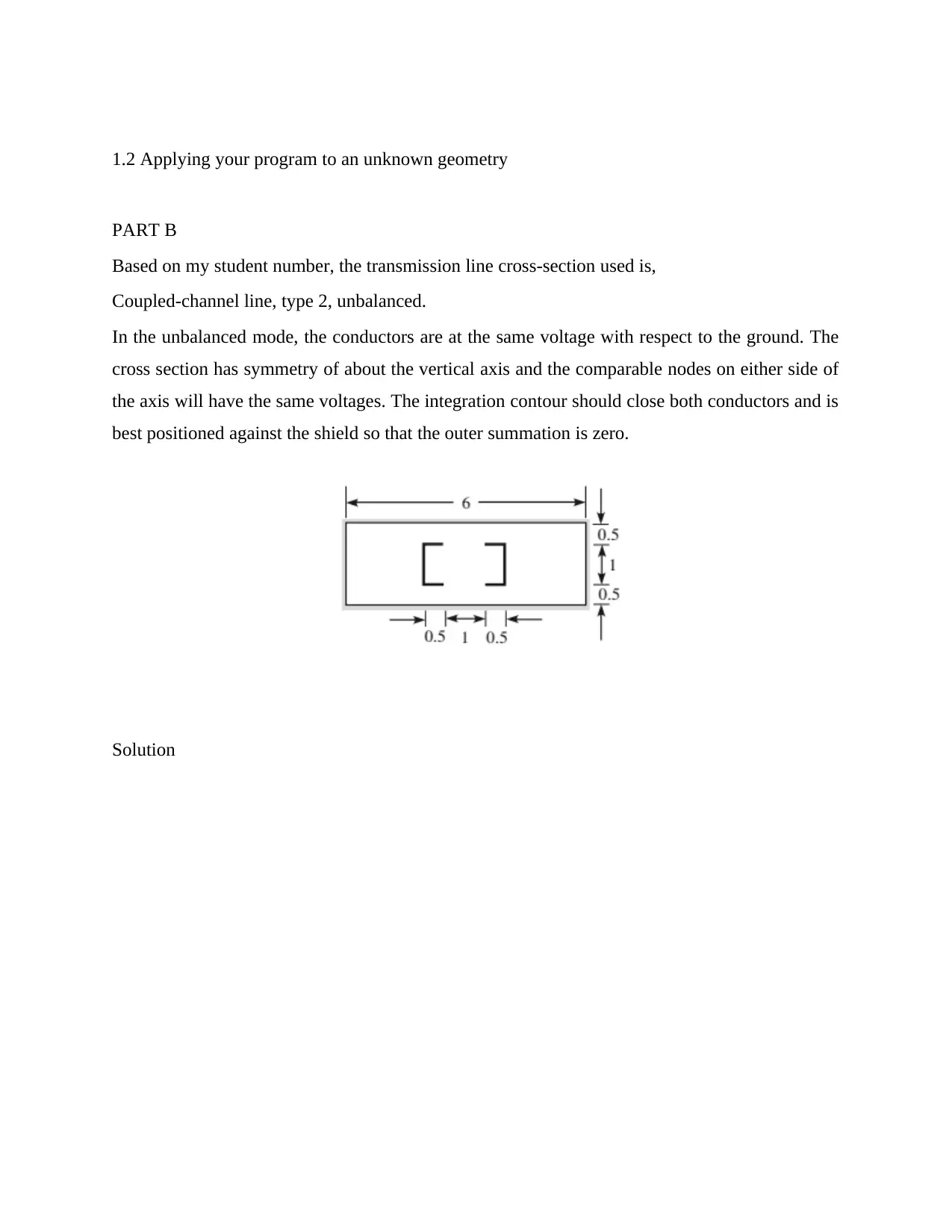ELE4605 - Numerical Modeling of TEM Waves in Transmission Lines
VerifiedAdded on 2023/06/11
|5
|729
|387
Practical Assignment
AI Summary
This assignment focuses on analyzing Transverse Electro-Magnetic (TEM) wave transmission line parameters using the finite difference method implemented in MATLAB. The program calculates the electric field across a known transmission line cross-section using sparse matrices and a grid with square cells. The assignment includes defining the domain and grid sizes, building matrices, and generating contour plots to visualize equipotentials. It estimates capacitance per-unit-length using Gauss’s law and calculates inductance based on Ampere’s law. The characteristic impedance is then derived from the wave equation. Additionally, the assignment applies the program to an unknown geometry, specifically a coupled-channel line, type 2, unbalanced, and discusses the solution approach for this configuration. The solution shows how to model static and dynamic field problems numerically using MATLAB.
1 out of 5









![[object Object]](/_next/static/media/star-bottom.7253800d.svg)